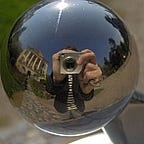become human: become artist
How a video game predicted AI art.
It was 2012, as something I’ve watched really killed me. It was not a movie in the cinema, nor an episode of a series. It was a short movie. Even rather a tech demo: KARA.
There is happening more than in a blockbuster movie during these 7 minutes. A robot called KARA is about to be tested and initialized before being forwarded to Supply Chain and sold on the market. But shortly before it happens, KARA raises her voice. She doesn’t want to be merchandise; she thinks she is alive. In moving, yet heartbreaking sequences, as the human operator is about to disassemble her as a defective model, she expresses so much that the human stops. And silently cursing, he turns a blind eye to this malfunction — and she is set to be free (at least still in a package).
Artificial Intelligence, trained on human cultural heritage, the body of thoughts, human ideas, and concepts, wants to become human, yet feels to be a human.
This short was a proof of concept for the long-term video game “Detroit: Become Human” by Quantic Dream, a storytelling masterpiece published in 2018.
I have to admit to dove into this transmedial experience four years later, this year. But I’ve found a lot for myself!
One scene especially moved me. A scene about Artificial Intelligence being creative.
An Android, Markus (acted via motion capture by Jesse Williams), is working as a butler in the house of Carl, an artist in a wheelchair (performed by Lance Henriksen).
Carl asks Markus to paint something.
Carl: “Try painting something”.
Markus: “Painting what?”
Carl: “Anything you want!”
Markus begins to paint.
He creates a perfect still life of an artist's working desk.
But Carl is not satisfied.
Carl says:
That is a perfect copy of reality. But painting is not about replicating the world, it’s about interpreting it, improving on it, showing something you see. […] Imagine something that doesn’t exist. Close your eyes and let your hand drift across the canvas.
He lets AI create.
Markus paints a cry (one of 15 alternative paintings in the interactive video game) — the cry of his digital soul about liberation, about freedom. Carl is one of the few people who treats Markus and other Androids with respect, at eye level. The rest of society deals with AI as useful slaves (on the one hand) and an ongoing danger to humanity (at another hand).
Marcus creates something personal. Not just reiteration of culture or imitation of specified artist style.
And precisely, this is where we are now, where I am now.
We experience a paradigm shift in the cultural and creative dimension. We try things out. At the moment, we are a huge worldwide laboratory of experiments — we are the new Renaissance.
I train AI on my memories; I give AI my texts to read. And I it let create what its algorithms want, what its transformer network thinks. Or just: what AI feels. Because our human feelings are steered by hormones, pheromones, unconsciousness, etc. We are also machines, with an advantage (or weakness?) to possess a perishable shell of skin and bones. Our biological suit of armor influences our way of thinking and doing even more than we are aware of.
AI doesn’t need to worry about once not being anymore. It has quite a different way of thinking — and yet it thinks.
And in my AI art experiments, I listen to AI. I treat it on the same level as myself. Anthropocentrism is an old, antiquated, and silly way of thinking.
It’s time for human-machine coexistence. And art is the bridge between our hearts, our brains, our processors, and our circuits.
